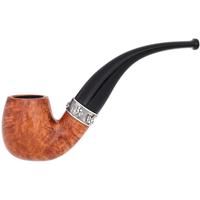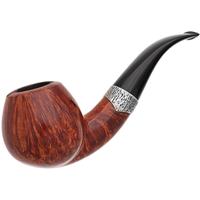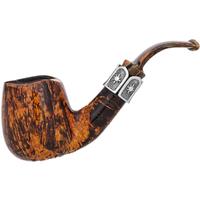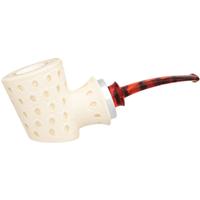Research Biologist Meets Tobacco Bloom
- Thread starter jmatt
- Start date
You are using an out of date browser. It may not display this or other websites correctly.
You should upgrade or use an alternative browser.
You should upgrade or use an alternative browser.
- Status
- Not open for further replies.
Good lord. Talk about a "monkey touch the monolith moment" If I could have brew a batch from an aged sample of tobacco that would be all I ever brewed.Ask him how to capture the yeast so it can be used in home brewing? Might make an interesting beer.
Thanks for the reactions everyone. Tons of great questions, many of which I asked last night during the long conversation with my son about these issues. Here's some of the stuff we did talk about, because I had many of the same thoughts you guys have:
On bacteria: It may or may not also be present throughout the tobacco. The visible stuff was only yeast and sugar. He showed me both under the scope, but unfortunately I don't have a scope-mounted camera to take pictures for you guys.
Why don't tobacco manufacturers produce yeast/bloom on purpose? Great question. He pointed out that all the big beer brewers have biologists and genetics scientists on staff to ensure the purity and survival of their preferred yeast variants, as the beer industry deeply understands the impact of yeast on the taste of their final product. It seems like pipe tobacco blenders primarily stick to tradition and doing what works.
On Enzymes: I didn't ask. I can follow up with him on that topic.
On seeding tobacco with other yeast: Great question Woodsroad. I actually asked that in multiple variations. Including - "what if I took a flake of Stonehaven and put it in jars of other tobacco?" I also wondered if the yeast found in the Jersey Isles (Germain/Esoterica) could be distinct from the yeast found in Carolina (C&D). He conceded that might be possible, but without scientific testing didn't think that was a real strong hypothesis. He also thought the yeast colony would max out reasonably quick, so adding an aged piece of Stonehaven to a freshly opened tin might not do much. Apparently common yeast is exactly that - incredibly common.
On Oxygen: His warning was once the tin is opened, oxidation is going to start and it is a relatively fast process. Here's an analogy he used: You age a bottle of Bordeaux for 20 years because it improves slowly over a long time. Open it and drink right away and it's probably very good. Put it in a decanter to "breathe" (oxidize) for just an hour and it's sublime. Try to drink it a week later and it's ruined junk. Now apply that to tobacco only much more slowly.
Some of his advice to me (as a guy with 50+ pounds of tobacco aging) -
1) Buy smaller tins. Once you open the aged 8 ounce tin the tobacco will change before you can smoke it all.
2) Once you open any tin, if you intend to age the tobacco then get rid of the oxygen. He suggested either packing the mason jars full, leaving little space for oxygen, OR - leave space in the jar and light a tea candle (unscented of course) and seal the jar. Oxygen is roughly 20% of our air. The tea light goes out at about 5% oxygen concentration, which is after 75% of the oxygen has been removed.
My own additional thought: Think about how tobacco is packaged. Esoterica eight ounce bags are practically vacuum sealed with little to no air (oxygen) present. Their 2 ounce tins are packed full. Then think about tins with plenty of air space (McClelland, C&D, etc). It seems like that could be making a real difference, although my son thinks the oxygen gets depleted pretty quickly in any sealed tin.
On bacteria: It may or may not also be present throughout the tobacco. The visible stuff was only yeast and sugar. He showed me both under the scope, but unfortunately I don't have a scope-mounted camera to take pictures for you guys.
Why don't tobacco manufacturers produce yeast/bloom on purpose? Great question. He pointed out that all the big beer brewers have biologists and genetics scientists on staff to ensure the purity and survival of their preferred yeast variants, as the beer industry deeply understands the impact of yeast on the taste of their final product. It seems like pipe tobacco blenders primarily stick to tradition and doing what works.
On Enzymes: I didn't ask. I can follow up with him on that topic.
On seeding tobacco with other yeast: Great question Woodsroad. I actually asked that in multiple variations. Including - "what if I took a flake of Stonehaven and put it in jars of other tobacco?" I also wondered if the yeast found in the Jersey Isles (Germain/Esoterica) could be distinct from the yeast found in Carolina (C&D). He conceded that might be possible, but without scientific testing didn't think that was a real strong hypothesis. He also thought the yeast colony would max out reasonably quick, so adding an aged piece of Stonehaven to a freshly opened tin might not do much. Apparently common yeast is exactly that - incredibly common.
On Oxygen: His warning was once the tin is opened, oxidation is going to start and it is a relatively fast process. Here's an analogy he used: You age a bottle of Bordeaux for 20 years because it improves slowly over a long time. Open it and drink right away and it's probably very good. Put it in a decanter to "breathe" (oxidize) for just an hour and it's sublime. Try to drink it a week later and it's ruined junk. Now apply that to tobacco only much more slowly.
Some of his advice to me (as a guy with 50+ pounds of tobacco aging) -
1) Buy smaller tins. Once you open the aged 8 ounce tin the tobacco will change before you can smoke it all.
2) Once you open any tin, if you intend to age the tobacco then get rid of the oxygen. He suggested either packing the mason jars full, leaving little space for oxygen, OR - leave space in the jar and light a tea candle (unscented of course) and seal the jar. Oxygen is roughly 20% of our air. The tea light goes out at about 5% oxygen concentration, which is after 75% of the oxygen has been removed.
My own additional thought: Think about how tobacco is packaged. Esoterica eight ounce bags are practically vacuum sealed with little to no air (oxygen) present. Their 2 ounce tins are packed full. Then think about tins with plenty of air space (McClelland, C&D, etc). It seems like that could be making a real difference, although my son thinks the oxygen gets depleted pretty quickly in any sealed tin.
"foolwiththefez said Good lord. Talk about a "monkey touch the monolith moment" If I could have brew a batch from an aged sample of tobacco that would be all I ever brewed."
Glad I could be an inspiration. Now get to work and let us know how it turns out.
Glad I could be an inspiration. Now get to work and let us know how it turns out.
Because too few folks would know what's going on, hence no marketability except as a very niche product.Why don't tobacco manufacturers bloom their own tobacco blends and sell it?
That's a very good point. I distribute mycorrhizae bacteria from the roots of my older potted trees and bonsai to the roots of newly bought ones to help establish a colony of them more quickly in the new plantings, and my trees couldn't be healthier.If there are microbes at work here, then they can be propagated and used to inoculate other batches of tobacco.
"He also thought the yeast colony would max out reasonably quick, so adding an aged piece of Stonehaven to a freshly opened tin might not do much."
If there isn't any food (sugar) for the yeast, then that's very true. But if you are seeing sugar crystals, then there IS food. Of course, we don't know what kind of sugar it is, nor do we know what kind of sugar the yeast prefer. One could always add sugar...experiments could be conducted, if you have a microbiology lab. You'd need to plate the yeast, for starters.
If I was retired and few extra bucks, I'd be on this.
If there isn't any food (sugar) for the yeast, then that's very true. But if you are seeing sugar crystals, then there IS food. Of course, we don't know what kind of sugar it is, nor do we know what kind of sugar the yeast prefer. One could always add sugar...experiments could be conducted, if you have a microbiology lab. You'd need to plate the yeast, for starters.
If I was retired and few extra bucks, I'd be on this.
G.L. Pease has said that bloom is "almost certainly not sugar".
jmatt, did your son come to the conclusion that this was sugar based solely on seeing it through a microscope? That's not very definitive.
http://www.tobaccoinfo.com.cn/issue/en_yckj/yqkd/65856.shtml
This analysis of the components of bloom on cigar leaf concluded that bloom was not sugar, but a kind of mixture composed of KNO3, NH4Cl, as major constituents, and some volatile organic compounds.
jmatt, did your son come to the conclusion that this was sugar based solely on seeing it through a microscope? That's not very definitive.
http://www.tobaccoinfo.com.cn/issue/en_yckj/yqkd/65856.shtml
This analysis of the components of bloom on cigar leaf concluded that bloom was not sugar, but a kind of mixture composed of KNO3, NH4Cl, as major constituents, and some volatile organic compounds.
Wow! Thanks for this very cogent explanation. It helped me to better understand a process that I had thought I properly understood (I had a bunch of, "oh, that's why that works that way" moments as I read it). Awesome stuff!
Sorry..."That's not very definitive"
School me on why. Other things can look like sugar crystals?
See my edited post above.
That study used atomic absorption spectrometry, ionic chromatography, UV spectrophotometry and gas chromatography/mass spectroscopy.
Guys - I have to admit that I'm simply trying to repeat most of what he explained, while acknowledging that most of what he said is over my head. He might have said "sugar" as the simple word I could understand without implying it was conclusively the equivalent of simple sugar in the sugar bowl at home. The yeast part seemed pretty conclusive. He directed my attention to a yeast in the process of multiplying via genetic cloning of itself. Hence the "budding" yeast. Anyway - I'll follow-up with more questions as I can get the opportunity. Amazingly, my tobacco hobby doesn't seem to be his top priority today. lol. 
jmatt,
Yeah, I doubt it's sugar. Yeast (especially S. cerevisiae) would eat sugar, not leave it behind.
Also, I've read that a former criterion used in the classification of S. cerevisiae was its inability to degrade starch.
Maybe he said "sugar alcohol"? The study I quoted detected small amounts of erythritol and xylitol, which are sugar alcohols. NOTE: sugar alcohols, despite their name, are not sugars, although they can be sweet.
Yeah, I doubt it's sugar. Yeast (especially S. cerevisiae) would eat sugar, not leave it behind.
Also, I've read that a former criterion used in the classification of S. cerevisiae was its inability to degrade starch.
Maybe he said "sugar alcohol"? The study I quoted detected small amounts of erythritol and xylitol, which are sugar alcohols. NOTE: sugar alcohols, despite their name, are not sugars, although they can be sweet.
Jmatt, my hat is off to you and your son. Very good information that may well dispel some unfounded myths on pipe tobacco. Thank you to the both of you.
Yaddy, no yeast has 100% attenuation rate, and there is always a lot of SOME kind of sugar left behind. I agree, though, that what is seen may not be sugar. What we need is a pipe-smoking biochem major lab assistant!
Yaddy, no yeast has 100% attenuation rate, and there is always a lot of SOME kind of sugar left behind. I agree, though, that what is seen may not be sugar. What we need is a pipe-smoking biochem major lab assistant!
KNO3 (Potassium Nitrate)School me on why. Other things can look like sugar crystals?

and NH4Cl (Ammonium Chloride)

Whoa, this an amazing thread!! My hat's off to you and your son jmatt............ :clap:
Now, get your son signed up as a member here, we could keep him busy................ :wink:
Now, get your son signed up as a member here, we could keep him busy................ :wink:
- Status
- Not open for further replies.













